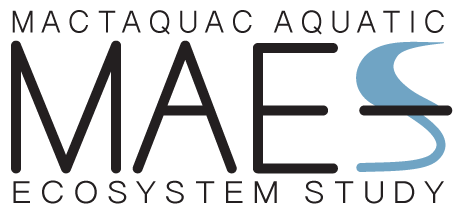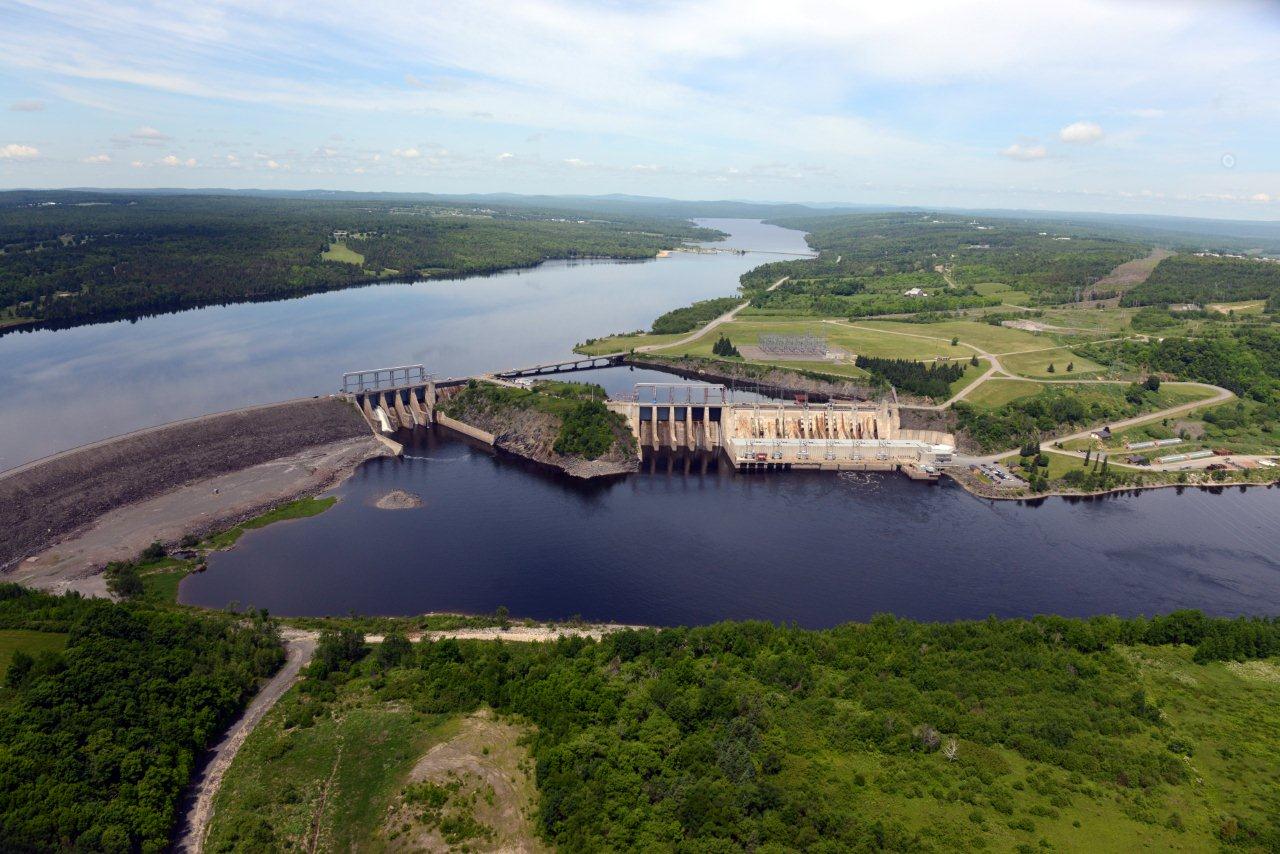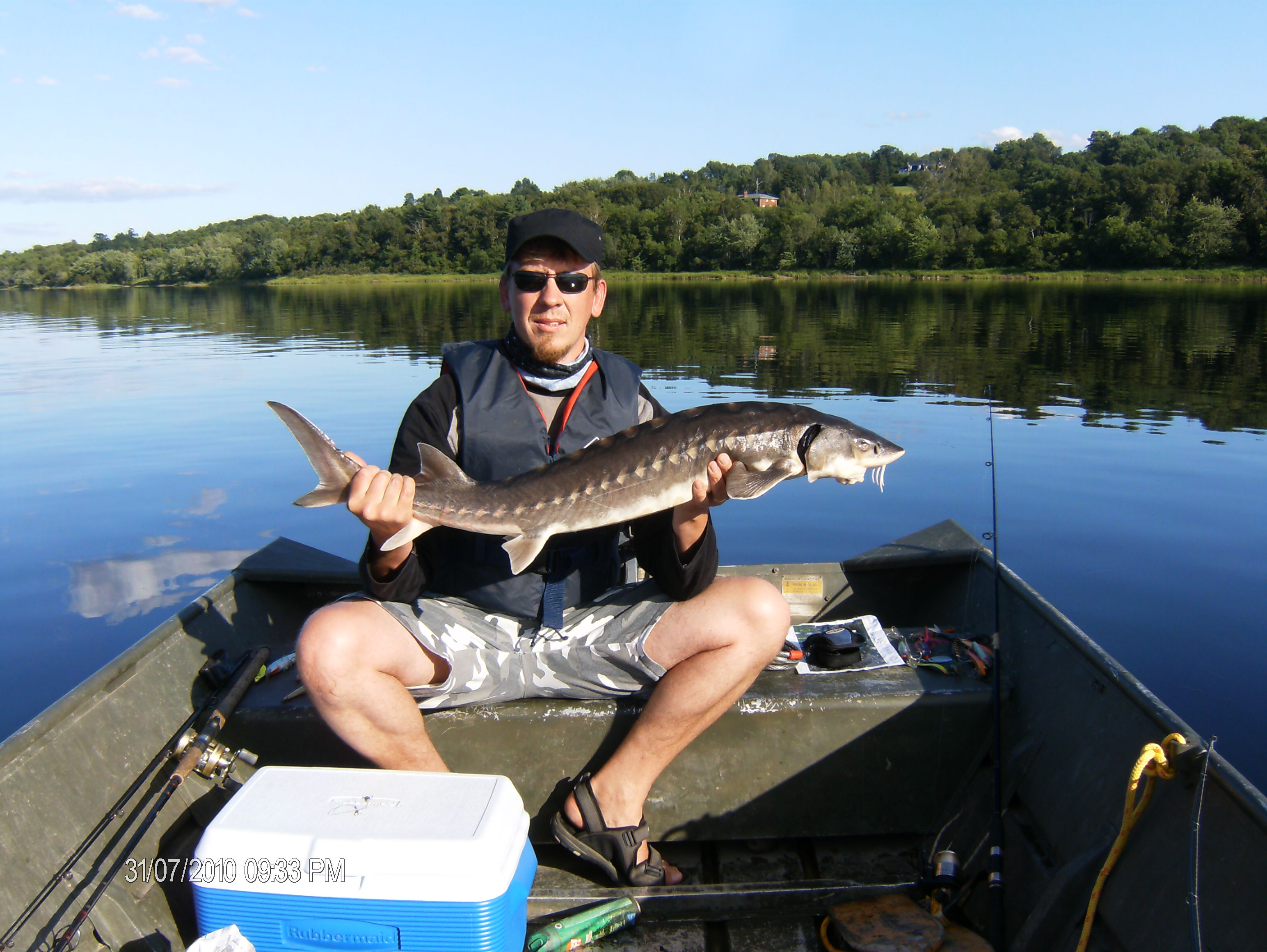
M.Sc. (University of Helsinki), Ph.D. (University of New Brunswick)


|
Tommi Linnansaari, Ph.D.
Research AssociateM.Sc. (University of Helsinki), Ph.D. (University of New Brunswick) |
 |
| Home page Personal information Current projects Past projects Publications Teaching experience Evolution of a Ballcap NEWS  |
Current projects:
Mactaquac Aquatic Ecosystem Study (MAES) I am a co-lead of a large multidisciplinary aquatic ecosystem study examining the future of a large hydropower dam. Mactaquac Dam (MD), a 672 MW run-of-the-river hydroelectric facility was constructed in 1968 on the main stem of the Saint John River (SJR), New Brunswick, Canada. The facility is expected to reach the end of its service life by 2030, when the powerhouse and spillway will no longer be viable because of an alkali-aggregate reaction with the concrete. NB Power will settle on a preferred option for the future of Mactaquac Dam by 2016. Options identified for the future include 1) repowering the station with a new powerhouse and spillway, 2) rebuilding the spillway only or 3) removing all parts of the station and restoring the river. The decision will be based on a combination of economic, environmental, and social consequences. The Mactaquac Aquatic Ecosystem Study (MAES) is a planned, whole-river ecosystem study and manipulation. It begins with a multi-year assessment of the structure and function of a large river ecosystem, followed by a manipulation of flow, sediment load, and thermal regime with consequential effects on the ecosystem, and then a multi-year period to monitor the recovery to a new river state. MAES takes a phased approach to address the scientific challenges for the future of the dam. Phase I (2014-17) is the assessment of the key baseline environmental conditions and description of the environmental challenges and opportunities for either replacing or removing the dam. The planned studies are described in entirety on the MAES website. Overall, we are currently working on over 30 separate projects, and I am (or will be) supervising a number of students in the MAES project. I am also working on a large review on understanding the ecological lessons learned from large dam removals and another concentrating on the state of the art of fish passage in multi-species complex. A short CBC radio interview talking about our Mactaquac Project is available here. MAES: Reservoir transit and downstream approaches to a large dam by Atlantic salmon (Supervising Ph.D. candidate Amanda Babin) The project is examining the migration success of Atlantic salmon smolts, adults, and post-spawners (kelts) in the 96 km long Mactaquac reservoir. Based on various acoustic telemetry studies, Amanda will establish the migration success of the different life stages of Atlantic salmon, and identify any potential bottleneck issues and/or areas for migration in the reservoir. She will also examine the dam approach of Atlantic salmon in detail (3D) to be able to give recommendations for downstream passage in an event a new powerhouse will be constructed. Amanda will also link the migration paths to various hydrodynamic and temperature models that are being deviced by other MAES members to be able to determine what dictates migration patterns in large reservoir environments. CBC news broadcast regarding the Atlantic salmon project is available here ... fast forward to 23:45 mark of the news. MAES: Restoration potential for reproduction by striped bass (Morone saxatilis) in the Saint John River (SJR) (Supervising Ph.D. candidate Sam Andrews) Striped
bass formed an important commercial and aboriginal fishery in
the SJR until 1978 when the fishery was closed as a MAES: Reproductive ecology of Atlantic (Acipenser oxyrinchus) and shortnose sturgeon (A. brevirostrum) in the Saint John River (SJR) (Seeking a Ph.D. or M.Sc candidate to carry out this research) Shortnose
sturgeon only exists in the SJR in Canada, and spawning of
Atlantic sturgeon in the Bay of Fundy is also believed to only occur For Atlantic
sturgeon,
spawning is also believed to occur somewhere downstream of the MD, but
no
information exists where, or when, Survival during
the early period of life is strongly linked to flow
regime
in systems operated for hydropower in other sturgeon species as flow The project
will use acoustic telemetry to track shortnose and
Atlantic sturgeon to determine the location of spawning grounds
of both species
This
project is a part of a large interdisciplinary reasearch group stydying
critical thermal refugia for
Atlantic salmon and brook trout populations of eastern Canadian rivers. Under the current climate change scenarios, the summer water temperature regime in many eastern Canadian rivers is predicted to become less favorable for coolwater fishes; it is believed that stress thresholds will be exceeded more often and in more reaches in future. The main focus of Emily's PhD project is to examine how the incidence of temperature stress events and proximity to thermal refugia affect the distribution and abundance of juvenile Atlantic salmon. We also study whether the fish behaviour and distribution changes after successive high temperature events, and if the possible movement response is adaptive in reducing stress and mortality. We have used PIT-telemetry at a large spatial scale to document the movement patterns of hundreds of juvenile salmon and the data will allow us to accurately model the thresholds determining the movement response towards the cold water refugia during thermally stressing periods. PIT-telemetry surveys were carried out in the Little Southwest Miramichi River in New Brunswick in 2009 & 2010, and in the Riviere Ouelle in Quebec in 2011 and 2012. Project further examined salmon parr densities on a large spatial scale before and after thermally stressing events in 2011 an 2012 to fully understand the significance of different types of thermal refugia for the Atlantic salmon populations. Studies in 2013 consisted of working in collaboration with Dr. S. Currie in a laboratory setting in Mt. Allison University, where Emily set up an experiment to better understand how juvenile Atlantic salmon physiologically recover after thermally stressing events. Such data is mandatory so that we can understand the mechanisms underlying the aggregation behaviour during heat stress. In 2014 we will be in an intense publishing phase of this research. Participating institutions: Institut National de Recherche Scientifique (Prof. Bergeron, Prof. St-Hilaire), McGill Univerity (Prof. M. Lapointe, Principal Investgator; Prof. J. McKenzie), Université de Montréal (Prof. D. Boisclair) and Canadian Rivers Institute at University of New Brunswick (Prof. A.Curry, Prof. R. Cunjak, Prof. K. MacQuarrie) and a number of graduate students and two postdoctoral fellows at the above institutions. The project is funded by NSERC and OURANOS-HYDRO QUEBEC --------------------------------------------------
trout and Arctic char in streams This project is originally stemming from the realization that the prevalence of a salmon parasite, Gyrodactulus salaris, may be linked to the ability of juvenile stream salmonids to escape the chemical treatments (like rotenon) by utilizing the in-substrate habitat in areas rich with groundwater. While in situ work examining this hypothesis has not yet been carried out, the first phase of this study focused on collating a state-of-the-art report on the subject (by the Norwegian participants), which is currently being modified to a peer-reviewed publication. Participating institutions: Freshwater Ecology and Inland Fisheries Laboratory, University of Oslo (Dr. J. Heggenes, Dr. Å. Brabrand), Norwegian Institute of Nature Research (Dr. G. Bremset), Canadian Rivers Institute (Dr. T. Linnansaari, Dr. R. Cunjak) The project was funded by the Norwegian Directorate for Nature Management (DN), administrated by Atle Hindar at Norwegian Institute for Water Research (NIVA). ---------------------------------
|
 Mactaquac Generating Station, consisting of an earthen dam, diversion sluiceway, main spillway and power house. Photo credit: Energie NB Power Ph.D. candidate Amanda Babin and senior technician Mark Gautreau installing acoustic receivers in the Saint John River for Atlantic salmon telemetry study. Senior
technician Mark Gautreau tagging a striped bass for an acoustic
telemetry study at the Mactaquac Generating Station.
 A shortnose sturgeon captured in the presumed spawning grounds in the Saint John River. Beechwood Generating Station An aggregation of Atlantic salmon
parr in a cold water refugia in the Little Southwest Miramichi River,
New Brunswick, Canada, during an extreme heat stress event in July
2010.
Photo credit: R.Cunjak. Photo credit: M. Fitzgerald |
|